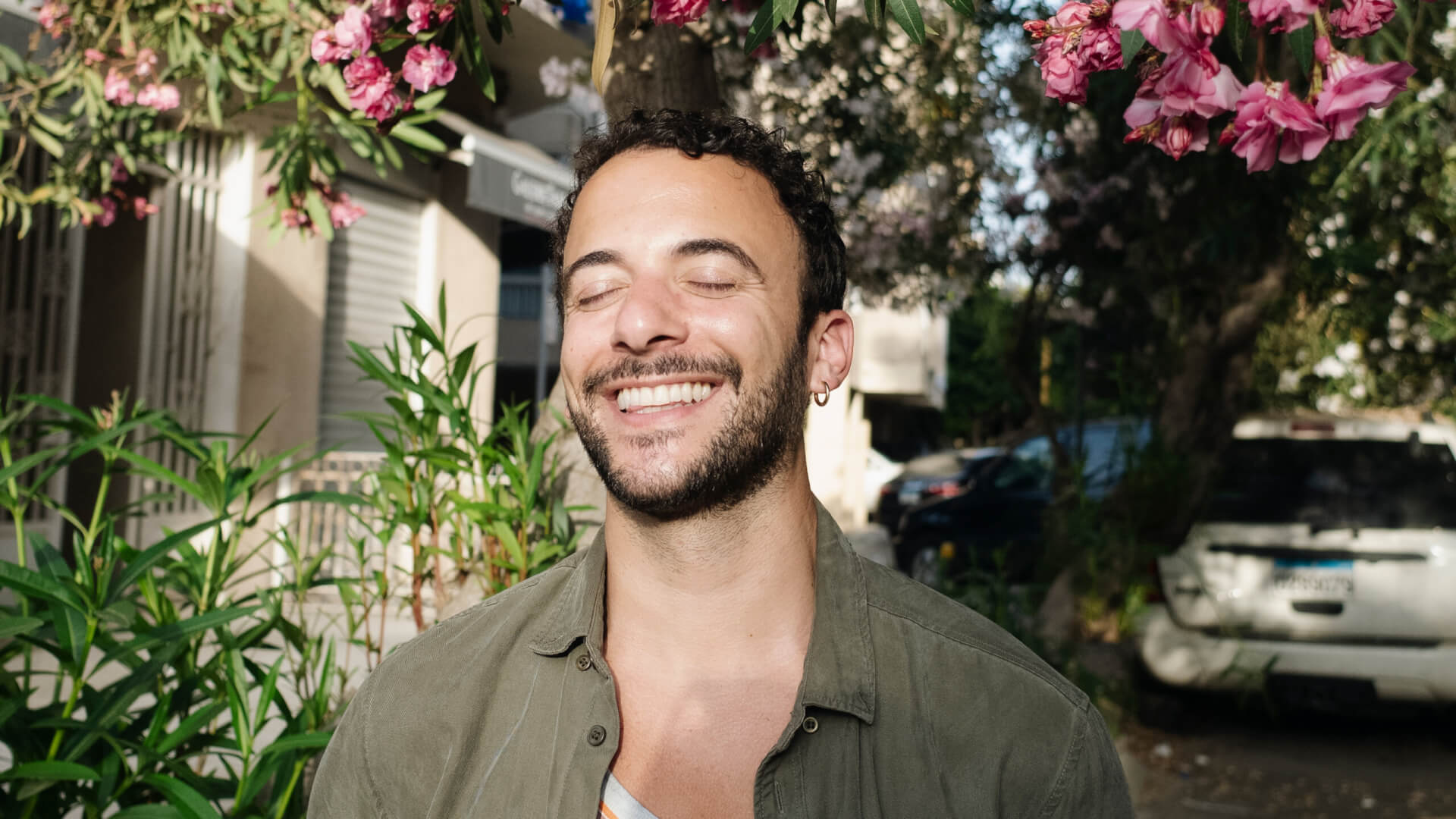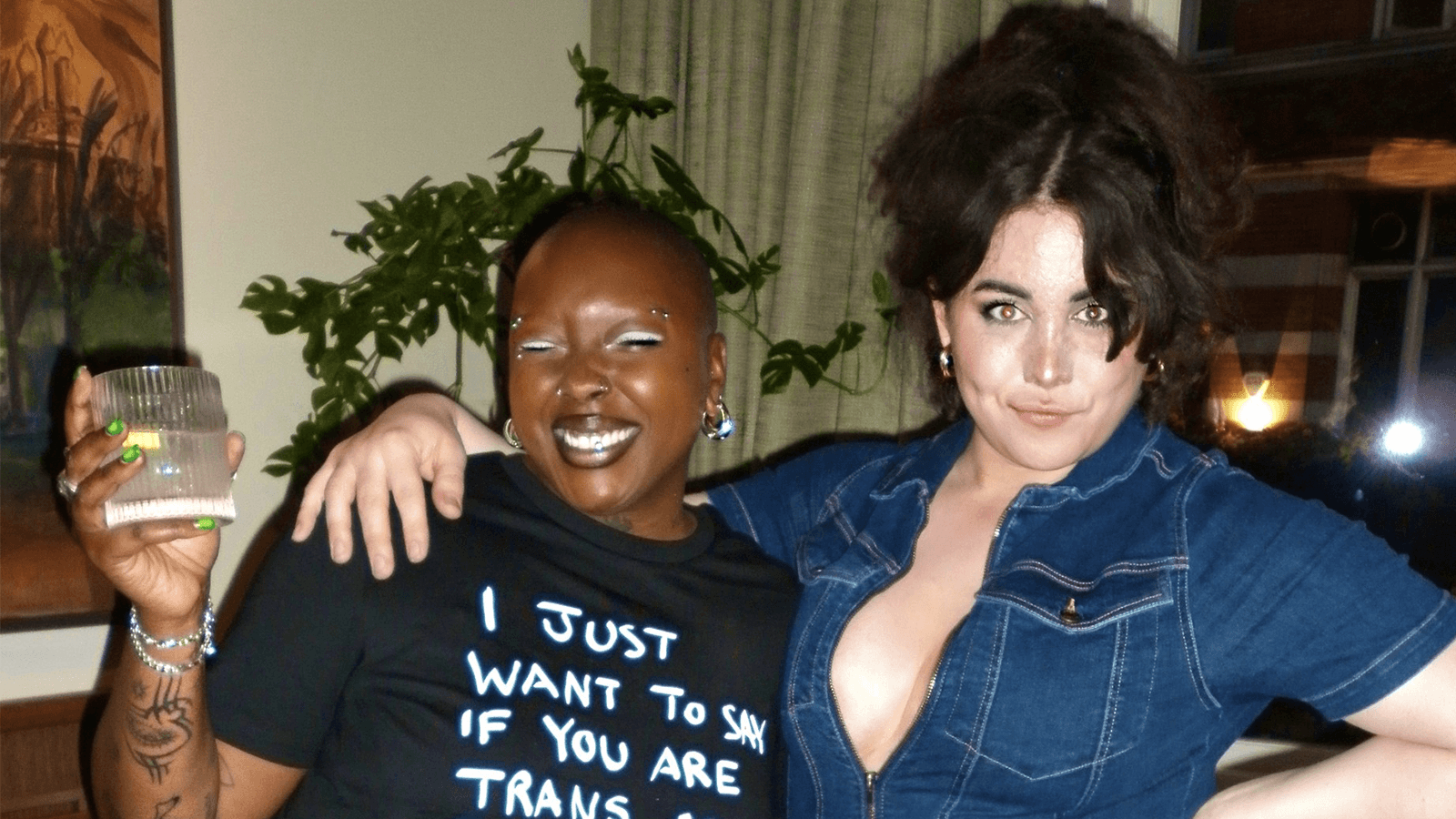“A Snapshot Of Our Linguistic Landscape”: Designer Marwan Kaabour On Creating The Queer Arab Glossary
Growing up in a creative Lebanese household in the 1990s, designer Marwan Kaabour’s formative years were shaped by Beirut’s queer scene. “In Beirut, there were multiple gay bars and gay clubs,” Kaabour tells me, “There were a couple of lesbian bars. There was a whole scene. It really allowed me to flourish.” Kaabour is also the founder of Takweer (@takweer_), an online platform spotlighting queer narratives in Arab history and culture, and the author of The Queer Arab Glossary, documenting queer slang through the Arabic language’s many dialects. The book acts as an extension of Kaabour’s ongoing creative activism and his desire to research, document and celebrate queer narratives in Arab history and pop culture.

Frustrated by global media’s portrayal of a singular, negative narrative about queer lives – one that emphasises trauma and rejection – Kaabour founded Takweer in 2019. “Yes, there are stories of challenges, of trauma, of really dark family occurrences,” he tells me, “But there are also an incredible amount of stories [about] joy and acceptance, of different ways families were able to embrace their queer child or siblings. And those stories were almost completely left out [of pop culture].” Through the platform, Kaabour presents a more nuanced representation of queer lives through his knack for storytelling. “Takweer is an attempt to create a space that might offer solace or belonging or safety to people who are still trying to figure themselves out and who happen to fall under the same cultural social background as myself,” he says.
After graduating with a degree in graphic design from the American University of Beirut, he moved to London in 2011 and eventually worked his way up to founding his own design studio in 2020. He has collaborated with institutions and artists such as the V&A, Art Basel, Somerset House, Banksy and he also designed Phaidon’s Rihanna book. Today, Kaabour has earned himself a role as one of the most innovative young voices in the Arab region’s creative sphere and its diaspora, not least due to his his viral word-based posters on Instagram, shared by the likes of Bella Hadid, which highlight in bold and simple statements the Palestinian movement for liberation. He began sharing them in 2021 during the Israeli military’s attack on the West Bank, and has continued more recently, with the ongoing genocide in Gaza. The political graphics, says Kaabour, reinforced the idea that “you could be a successful designer, a creative and artist. You could be queer and fashionable and cool, and care about what matters in life. These things don’t exist mutually exclusive to each other.”
During the first lockdown in 2020, Kaabour began collating The Queer Arab Glossary, which was published in June this year. The idea came about through his work with Takweer, in which he was engaging with people from different regions using queer slang words that were unfamiliar to him. As a result, he was struck with the concept of creating a linguistic ‘map’.
Echoing the Arabic language’s complexity, the book is categorised by dialects: Iraqi, Levantine, Gulf, Maghrebi, Sudanese and Egyptian. The inspiration for focusing on slang was mostly due to its ephemeral nature; it can easily fade away with the passing of generations. Thus, the book acts as an archive of sorts, to preserve aspects of queer Arab culture, offering an accessible and affordable reference for the community.
“Slang, in its very nature, is constantly evolving and changing, as is queerness – trying to kind of define queerness is an impossible task,” Kaabour tells me. “I was working with a lot of fluid material to try to formalise it in the more old-school vehicle that is the glossary.” In this way, Kaabour modernises and decenters the ‘glossary’ as an institutional, academic formula for linguistic documentation and democratises it – relaxes it, even. Kaabour eventually collaborated with Suneela Mubayi, a translator and scholar of Arabic literature, who spent a year and a half refining the glossary: adding historical context, clarifying etymologies and ensuring the accuracy of the entries.
One complexity – of the many that exist for Arab queers – was how to approach the derogatory, homophobic terms used casually throughout the region. The wide use of queer slang in the Arabic language exists mostly in response to the lack of adequate language to describe LGBTQIA+ individuals and queerness. There are what Kaabour calls ‘politically correct’ or ‘academic’ terms for words such as ‘homosexual’, ‘Transgender’ and ‘bisexual’, but they are rarely spoken in daily Arab life, often reserved for NGO or humanitarian contexts. Slang thus exists as a protest against this erasure of queerness.

“Unlike glossaries that attempt to present the correct way of saying things, I am actually presenting the entirety of the linguistic landscape,” says Kaabour. “And in a more contemporary sense, I’m also defying identity politics and political correctness, which has installed such a large degree of policing around language. Yes, we need to speak to people with respect and to acknowledge their humanity, their experiences and their traumas, but this is still part of my history, and I’m entitled to deal with it in whichever way I choose to.”
Kaabour invited eight writers from different parts of the Arab region, including Rabih Alameddine and Abdellah Taïa, to contribute essays, presenting various vignettes of thought, memory and experience from across the queer spectrum. These essays situate the glossary in contemporary contexts, addressing issues such as colonisation, Palestine and the experiences of Syrian Trans refugees in Lebanon.
One of his favourite words from the book is ‘Habbaba’, which his mother submitted, meaning ‘the one who loves, or the one who offers love’. He tells me it was used commonly in the north of Lebanon, Tripoli, as well as in parts of Syria, to refer to women who have romantic relationships with other women. These queer women would recognise each other by tying a scarf from the side on their necks, echoing the ‘hanky code’ of the 1970s Western queer community.
Though the book is designed by Kaabour himself, Palestinian illustrator Haitham Haddad populated it with characters which, Kabour says, “allow us to dream and to reclaim these words as part of our narrative, and to take away the toxins that have historically made them so bad”. Haddad’s characters add a playful dimension to the glossary, turning derogatory terms into tongue-in-cheek symbols of pride and resilience.
The Queer Arab Glossary is a snapshot of the linguistic landscape around queerness in the Arabic-speaking world without sanitising its history. It is not a definitive glossary, as Kaabour insists, but a conversation starter, encouraging others to build upon it and continue documenting queer culture. Marwan’s spectrum of work – from graphic design and Takweer to lending his platform to Palestine – challenges the potentially limiting nature of identity politics by asking us to extend our narratives beyond ourselves in a playful, everlasting way.
Marwan Kaabour’s 3 Queer Arab Publications To Know
- My Kali Magazine – A queer-feminist, bilingual webzine from and for the Arabic-speaking region and diaspora
- Kohl Journal – This progressive, feminist journal covers on gender and sexuality in the Middle East, South West Asia, and North African regions.
- Cold Cults Magazine – A photo journal exploring queer culture and the Southwest Asian and North African (SWANA) region.
The Queer Arab Glossary edited by Marwan Kaabour is out now in all good book retailers and at saqibooks.com
Dalia Al-Dujaili is an Iraqi-British arts writer and producer based in London and the Online Editor of the British Journal of Photography, mainly covering emerging creativity from the SWANA region and various diasporas. Bylines include The Guardian, Dazed, GQ Middle East, WePresent, Aperture, Atmos, It’s Nice That, Huck and Elephant Art. Collaborations include the Barbican, TATE Galleries, The Photographer’s Gallery, the Zaha Hadid Foundation, Bow Arts, Refuge Worldwide, Nike, Ugg, Converse, Browns, Royal Museums Greenwich. She’s received press in GQ Middle East, Port, It’s Nice That, Dazed, Khamsa and more




